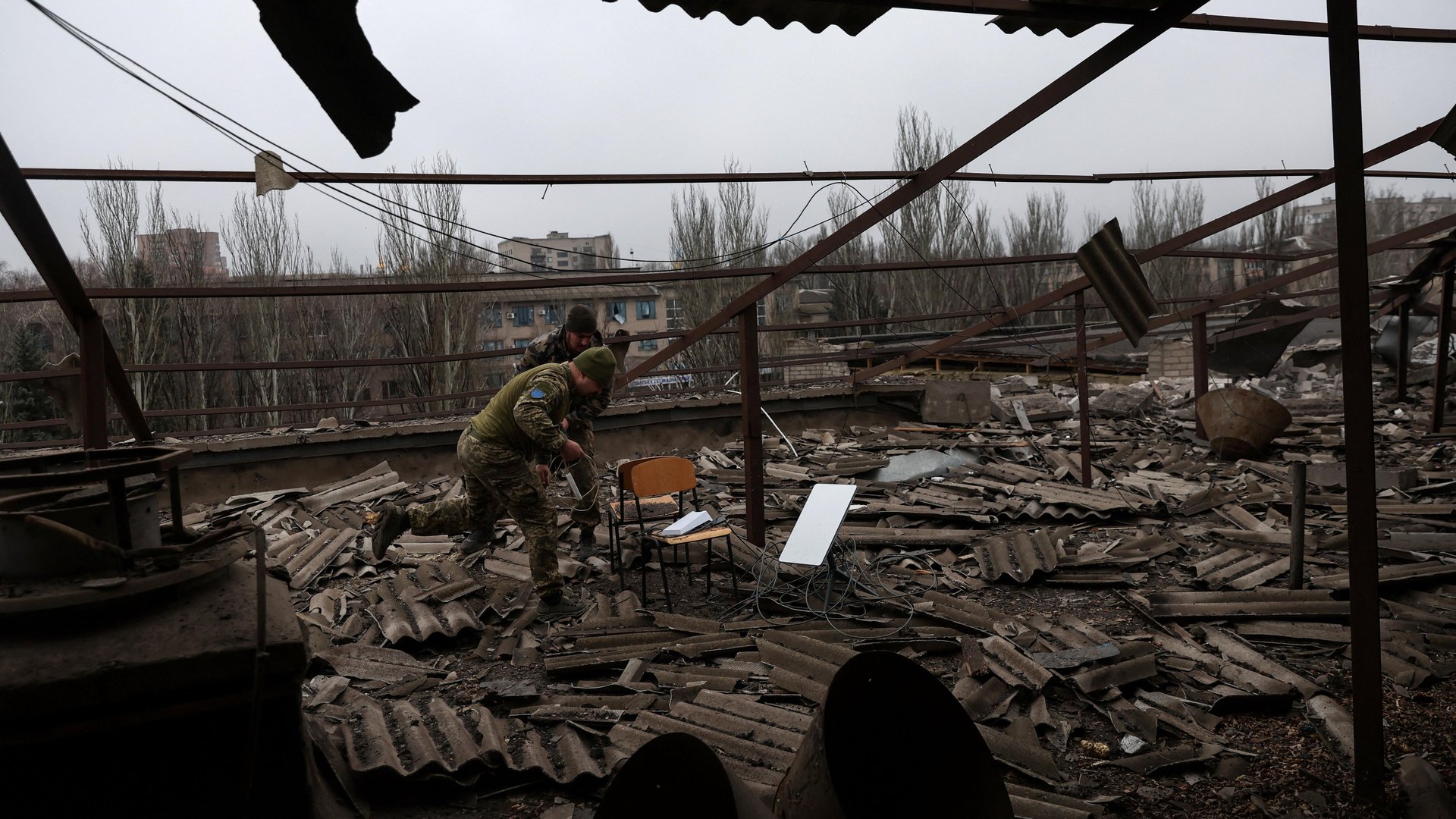Starlink can help save Ukraine's economy, too
The internet isn't just for calling in missile strikes.

Ukraine’s fight against Russian invaders has been enabled by Starlink, the world’s largest satellite network. Thousands of satellites are providing internet service to military forces and civilians alike in Ukraine, helping the country withstand attacks on its electrical and communications infrastructure.
Suggested Reading
SpaceX will now send Ukraine about 10,000 more terminals for accessing Starlink internet, a Ukrainian government minister told Bloomberg. It has already received 22,000 since the war began in February, including replacements for units destroyed in combat.
Related Content
Mykhailo Fedorov, Ukraine’s minister for digital transformation, also said that a dispute with Musk about the cost of the terminals (and presumably his engagement with Russia’s autocrat, Vladimir Putin) has been resolved.
In October, Musk claimed that his company had lost $80 million providing internet service during the conflict and SpaceX sent a letter to the US Department of Defense demanding $124 million to provide Starlink service in Ukraine, which included monthly payments 45 times higher than a typical customer might pay.
After the letter was leaked to the press, SpaceX withdrew its request for additional funding amid public criticism. The cost of these new terminals will be paid instead by several unidentified European Union governments, Fedorov said.
SpaceX announced this week that Starlink now has one million customers, which likely represents $1 billion in annual revenue for the company. SpaceX just received permission to launch 7,500 new Starlink satellites that promise to add more capacity to the network and link directly to mobile phones.
What Ukraine will do with satellite internet
Just this week, a New York Times account of Ukrainian forces hunting their enemies in the hotly-contested city of Bakhmut put a spotlight on the importance of Starlink. A small team of foreign volunteers used a thermal sight to find Russian vehicles and soldiers in the dark, and then relayed their locations to artillery spotters via Starlink. Still, the system’s weaknesses were also on display, as heavy cloud cover made it difficult for the users to link up with satellites overhead.
The terminals will also help with another problem: Keeping Ukraine’s economy going as the country devotes resources to the war and Russia blocks many of its exports. In 2021, before the conflict began, Ukraine exported $6.8 billion in IT services, about one-tenth of the country’s total sales abroad. The OECD has argued that doubling down on that digital economy could be vital to a post-war recovery.
But keeping cash flowing in is just as important now. Fedorov says that IT sales have actually grown during the war, at least through October, when Russia stepped up its missile and drone strikes against Ukraine’s electrical infrastructure. Now, Fedorov says internet companies are obtaining generators and using Starlink connections to meet the demand for their work.